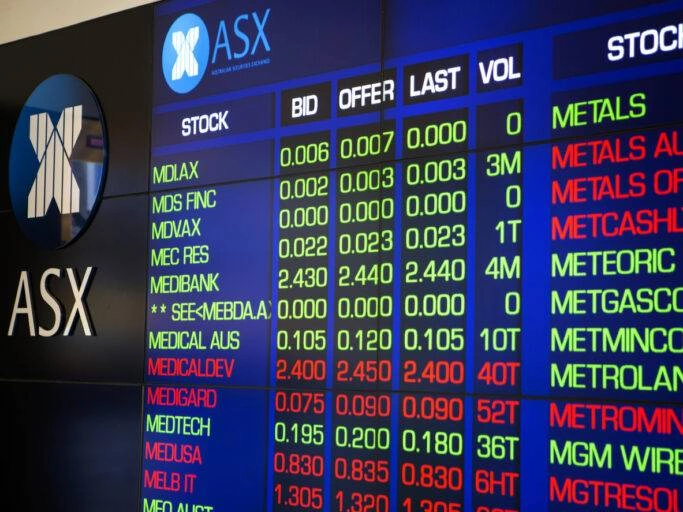driven by a weaker US dollar and growing expectations of US Federal Reserve rate cuts.
Gold and Silver Record Highs
Gold set a new benchmark when the London Bullion Market Association fixed its afternoon auction price at US$3,475 per ounce (A$5,350/oz). This figure surpassed the previous peak recorded in April. On the spot market, gold traded as high as US$3,489/oz (A$5,370/oz).

Gold and silver record highs push ASX gold stocks to strong gains
Silver also reached a new level, advancing to US$40.76/oz (A$62.70/oz), its strongest price in 14 years. The sustained demand reflected the strengthening role of precious metals as reliable assets during uncertain times.
Safe-Haven Buying Strengthens
During the period of political and institutional unrest within the United States, safe-haven buying was on the rise. Independence of the Federal Reserve became a major concern following news of pressure on Chair Jay Powell and to oust Governor Lisa Cook.
Markets now price in a likely rate cut at the September 17 meeting. A lower interest rate environment often makes non-yielding assets such as gold and silver more attractive.
Financial commentator @MetalsInsider tweeted, “The gold and silver record highs reflect not only monetary expectations but also deepening concerns about US policy stability.”
Benefits for Australian Gold Producers
The price surge provided Australian gold producers with record margins. At current exchange levels, the Australian dollar gold price trades above A$5,350/oz. This allows local miners to generate increased returns.

Mid-tier operators Northern Star Resources (ASX: NST), Evolution Mining (ASX: EVN), and Gold Road (ASX: GOR) are well-positioned. Their portfolios and lower production costs enable strong cash flow growth at these elevated prices.
Explorers and developers also benefited from investor attention. Barton Gold (ASX: BGD) and Santana Minerals (ASX: SMI) have seen renewed interest as traders seek leverage on the gold margins Australia offers.
Global Central Bank Demand
Central banks have maintained steady demand for bullion, expanding purchases to diversify reserves away from the US dollar. This buying trend has absorbed a large portion of the market supply.

Central banks increase gold purchases, supporting Australian gold producers and global prices.
The move suggests a long-term strategy to reduce reliance on a single reserve currency. According to @MacroCommodities, “Central bank gold demand remains a structural driver. This is one of the most important features of the current cycle.”
These consistent flows provide strong support for ASX gold stocks as the sector benefits from institutional and retail investment.
Broader Resources Market
Australian markets also tracked gains across the resources sector. Iron ore prices advanced, while copper remained steady. Precious metals added further strength, with silver up 2.4 per cent and platinum and palladium up 4 per cent each.
Energy also moved higher, with oil prices rising 1 per cent. Analysts noted that diversified resource companies such as South 32 could attract more interest. Firm commodity markets also supported global miners BHP and Rio Tinto.
Moomoo Australia analyst Michael McCarthy said there could be a resources-led rally on the Australian Securities Exchange. As the US markets were closed over Labor Day, markets in the Asia-pacific traded separately.
Economic Data Ahead
Reporting season activity continued to shape local trading, with investors rotating toward stronger performers. Markets also looked ahead to the GDP data due Wednesday. Forecasts point to growth lifting from 1.3 per cent in the first quarter to 1.6 per cent annually.
Upcoming US jobs data also remained a focus. A weaker reading could strengthen expectations of near-term Federal Reserve rate cuts, potentially driving further gains in gold and silver.
Market Outlook
Gold has risen 33 per cent year-to-date, supported by inflation concerns, geopolitical uncertainty, and questions about US economic resilience. Silver has shown even stronger percentage gains during the same period.
Market observers expect ASX gold stocks to remain supported as global demand, high margins, and central bank buying continue. Traders will monitor upcoming inflation figures and US monetary policy signals as potential catalysts.
FAQs
Q1: What are ASX gold stocks?
A: ASX gold stocks are shares of companies listed on the Australian Securities Exchange that mine or explore gold.
Q2: Why are gold and silver at record highs?
A: Weak US dollar, potential Federal Reserve rate cuts, inflation concerns, and geopolitical uncertainty drive demand for precious metals.
Q3: Which Australian gold producers benefit the most?
A: Northern Star Resources, Evolution Mining, and Gold Road Resources enjoy strong margins and cashflows at current gold prices.
Q4: How does central bank demand affect ASX gold stocks?
A: Central banks diversifying away from US dollars increase gold buying, supporting global prices and ASX-listed gold producers.
Q5: What risks could affect ASX gold stocks?
A: Strong US dollar, higher-than-expected interest rates, and technical corrections can challenge precious metals prices.












